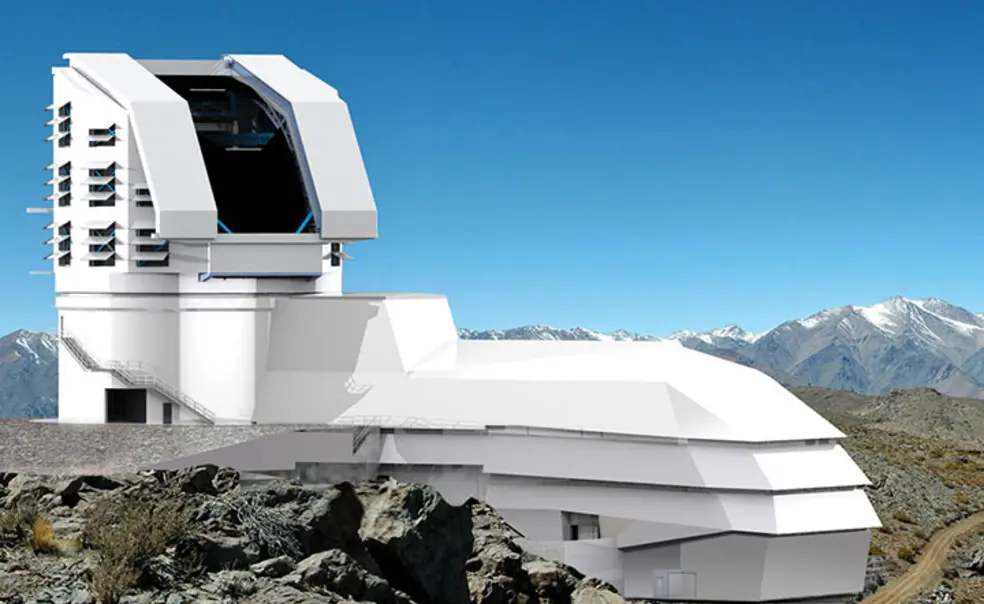Astrophysics: View of the Heavens
A new telescope aims to map the universe in stunning and unprecedented detail
Several gigantic telescopes are under construction in Chile and Hawaii, so powerful that they are likely to revolutionize our understanding of the heavens. Harvard and Caltech — like Princeton, powerhouses in cosmology — have kicked in funding to get observing time. But the astronomers at Peyton Hall think there’s more to be gained elsewhere, throwing their expertise behind a much smaller telescope that could prove to be even more revolutionary.
That’s the Large Synoptic Survey Telescope (LSST): It cannot see as deeply into the universe as the bigger scopes — although with a mirror more than eight meters across, it’s as large as the biggest telescopes currently in operation. But its field of view is so broad that it will take in a patch of sky 40 times the size of the full moon with every exposure, and its 3,200-megapixel camera is so fast it will image the entire visible sky once every two weeks. In essence, it will create a motion picture of the universe itself.
“It was very much a philosophical choice to participate in LSST,” says David Spergel ’82, chair of the Department of Astrophysical Sciences. In science, he says, you either study particular objects in great detail, as very large telescopes do, or you study large numbers of objects in less detail, looking for patterns. For many years, he says, Princeton has chosen to put its money mostly on the latter. The Sloan Digital Sky Survey (SDSS), for example, which made the most detailed 3-D map of the cosmos in history in the early 2000s, was largely conceived at Princeton. Thanks to SDSS, astronomers know far more about how galaxies cluster together in the cosmos and the structure of the Milky Way. And the Wilkinson Microwave Anisotropy Probe, also built at Princeton, created a high-precision survey map of the microwave radiation left over from the Big Bang.
The LSST, located in Chile, is funded by the National Science Foundation, the government of Chile, and a score of national laboratories and universities in addition to Princeton, in the U.S. and 10 other countries. It will give astronomers the precise locations and characteristics of billions of stars, galaxies, and quasars, Spergel says. That could help solve all sorts of cosmic mysteries — the nature of dark matter and dark energy, for example. The LSST is expected to find hundreds of thousands of icy objects in the Kuiper Belt, out beyond Pluto, helping planetary scientists understand how the solar system assumed its present shape, says Michael Strauss, associate chair of astrophysical sciences.
Because the telescope will re-scan the cosmos a thousand times over its 10-year lifetime, it also will deepen astronomers’ understanding of how individual objects in the universe vary over time. Among them are Earth-approaching asteroids. “It’s useful to know if one is likely to hit us on the head,” Strauss says.
Development of the LSST already is in full swing. The huge glass mirror has been cast in a giant oven at the University of Arizona. Robert Lupton, a senior research astronomer at Peyton Hall, is leading a group that is wrestling with the complex software needed to manage the 30 terabytes of data the LSST will take in every night. Last April, Strauss and Lupton traveled to a mountain near La Serena in northern Chile for a ceremony to mark the start of construction of a new observatory to house the telescope.
By 2022, the LSST should go into full operation. And like every other time astronomers have gotten their hands on a new, unprecedentedly powerful telescope, Strauss says, “we’re sure to find things we never could have anticipated.”













No responses yet